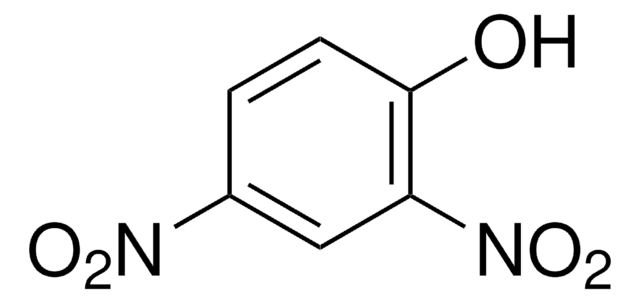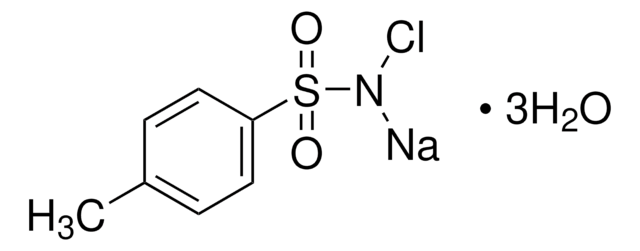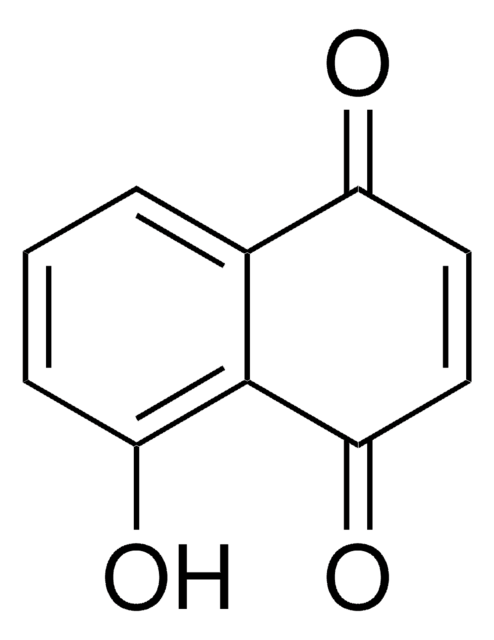32719
Quinoclamin
PESTANAL®, analytical standard
Synonym(e):
2-Amino-3-chlor-1,4-naphthochinon
About This Item
Empfohlene Produkte
Qualität
analytical standard
Qualitätsniveau
Produktlinie
PESTANAL®
Haltbarkeit
limited shelf life, expiry date on the label
Methode(n)
HPLC: suitable
gas chromatography (GC): suitable
Anwendung(en)
agriculture
environmental
Format
neat
SMILES String
NC1=C(Cl)C(=O)c2ccccc2C1=O
InChI
1S/C10H6ClNO2/c11-7-8(12)10(14)6-4-2-1-3-5(6)9(7)13/h1-4H,12H2
InChIKey
OBLNWSCLAYSJJR-UHFFFAOYSA-N
Suchen Sie nach ähnlichen Produkten? Aufrufen Leitfaden zum Produktvergleich
Verwandte Kategorien
Allgemeine Beschreibung
Anwendung
- Honeybees by dispersive solid-phase extraction (dSPE), followed by liquid and gas chromatography coupled with tandem mass spectrometry (LC-MS/MS and GC-MS/MS).
- Chlorophyll-containing matrix by dSPE and GC-MS/MS.
Empfohlene Produkte
Rechtliche Hinweise
Signalwort
Warning
Gefahreneinstufungen
Acute Tox. 4 Oral - Aquatic Acute 1 - Aquatic Chronic 1 - Carc. 2 - Eye Irrit. 2 - Repr. 2 - Skin Sens. 1A - STOT RE 2
Zielorgane
Blood,Kidney
Lagerklassenschlüssel
11 - Combustible Solids
WGK
WGK 3
Flammpunkt (°F)
Not applicable
Flammpunkt (°C)
Not applicable
Persönliche Schutzausrüstung
Eyeshields, Faceshields, Gloves, type P2 (EN 143) respirator cartridges
Hier finden Sie alle aktuellen Versionen:
Besitzen Sie dieses Produkt bereits?
In der Dokumentenbibliothek finden Sie die Dokumentation zu den Produkten, die Sie kürzlich erworben haben.
Unser Team von Wissenschaftlern verfügt über Erfahrung in allen Forschungsbereichen einschließlich Life Science, Materialwissenschaften, chemischer Synthese, Chromatographie, Analytik und vielen mehr..
Setzen Sie sich mit dem technischen Dienst in Verbindung.










